When it comes to luxury SUVs, Lexus has built a formidable reputation over the years for producing vehicles that combine opulence with reliability. The brand, as Toyota’s luxury division, benefits from decades of proven engineering and a commitment to quality that often sets it apart from competitors.
Lexus SUVs are widely admired for their refined interiors, smooth rides, and durable mechanical components. However, not all Lexus SUVs are created equal when it comes to longevity and dependability.
While many models have earned the distinction of being “built to last forever,” others harbor hidden flaws that can surprise owners with unexpected repairs, reliability issues, or depreciating value.
Understanding which Lexus SUVs truly stand the test of time requires digging beneath the glossy brochure promises and marketing campaigns. It’s important to recognize that durability in an SUV comes not only from robust engineering but also from thoughtful design choices, quality of materials, and ease of maintenance.
Factors such as drivetrain simplicity, suspension design, and electrical system complexity all play critical roles in determining whether a luxury SUV becomes a lifelong companion or a costly headache.
Lexus has had many successes in crafting models that age gracefully and retain their value, but the brand has also made design compromises or pushed technological boundaries that sometimes led to unforeseen issues.
This article delves into five Lexus SUVs widely regarded as remarkably reliable and long-lasting. These vehicles benefit from conservative engineering, proven Toyota underpinnings, and an emphasis on durability that makes them ideal for owners who want a dependable SUV for the long haul.
From the off-road-ready GX 460 to the efficient and practical NX 300h hybrid, these models showcase the best of Lexus’ commitment to quality.
Conversely, the article also sheds light on five Lexus SUVs that, despite their initial appeal and luxury credentials, have hidden flaws that detract from their long-term ownership experience.
These issues range from early hybrid battery degradation to suspension complexities, turbocharged engine carbon buildup, and problematic electronics.
Some of these flaws are tied to the era when Lexus was pushing new technologies or experimenting with complex features that ultimately challenged reliability.
By exploring both sides—the SUVs built to last forever and those with hidden flaws—potential buyers, current owners, and enthusiasts can make better-informed decisions.
Whether you prioritize rock-solid mechanical dependability or want to avoid costly surprises in your next Lexus SUV purchase, this guide provides a comprehensive look into what to expect from some of the brand’s most notable models.
Also Read: 5 Luxury SUVs That Last a Decade and 5 That Constantly Need Fixes
5 Lexus SUVs Built to Last Forever
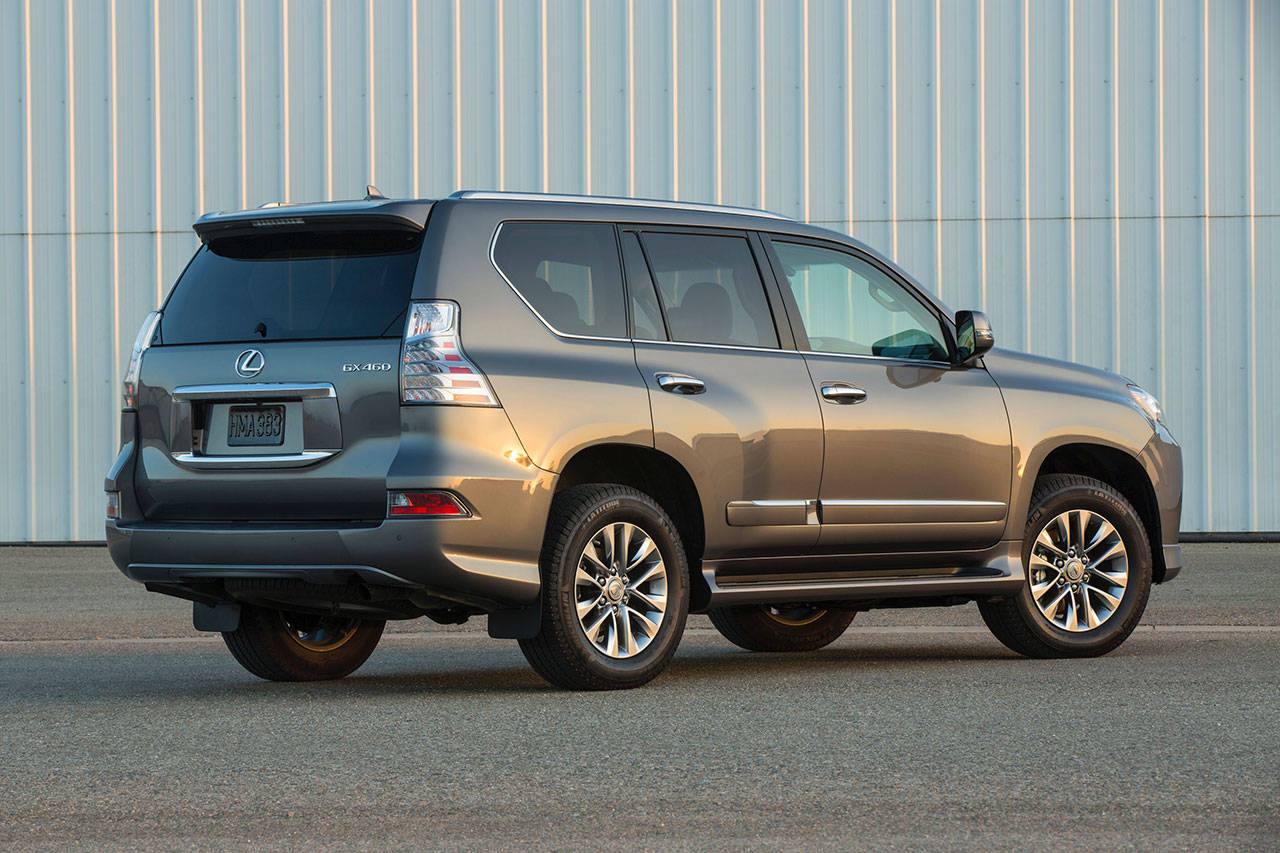
1. Lexus GX 460 (Built to Last)
The Lexus GX 460 is one of the rare modern SUVs that successfully blends old-school durability with modern luxury. Underneath its upscale exterior is a rugged, body-on-frame platform derived from the Toyota Land Cruiser Prado, which has been battle-tested in harsh environments across the globe.
The GX 460’s 4.6-liter naturally aspirated V8 engine is an example of Toyota’s conservative and proven engineering philosophy. This engine is designed not for performance flash, but for unyielding consistency.
It lacks turbos or high-strung features, which means fewer parts that wear out or fail. The 6-speed automatic transmission, also conservative, shifts smoothly and lasts far beyond what most owners will ever need, many reaching 200,000 miles and beyond without serious issues.
Off-road enthusiasts especially praise the GX 460 for its full-time four-wheel-drive system, complete with a Torsen limited-slip center differential and a low-range gearbox.
It’s one of the few luxury SUVs that can be driven straight off the dealership lot and onto a rocky trail without modification. The availability of the Kinetic Dynamic Suspension System (KDSS) further boosts off-road articulation while retaining on-road civility.
Owners who take the GX off the beaten path often report that even under demanding conditions—mud, snow, steep inclines—the SUV performs with confidence and composure. It’s built to handle real-world abuse, and that resilience translates into longevity even for daily urban drivers who never go near a trail.
What truly cements the GX 460’s status as a “forever SUV” is its low cost of ownership and long-term reliability. The widespread availability of parts, thanks to its Toyota roots, makes repairs affordable and mechanics familiar with the platform. Even in higher-mileage vehicles, common repairs rarely extend beyond normal wear items like brake pads, bushings, or belts.
Resale value also holds up remarkably well; a well-maintained GX with 150,000 miles can still command a strong price in the used market. For families, adventurers, and anyone who values a dependable vehicle that doesn’t age out of usefulness, the GX 460 stands as one of the best investments in the luxury SUV space.
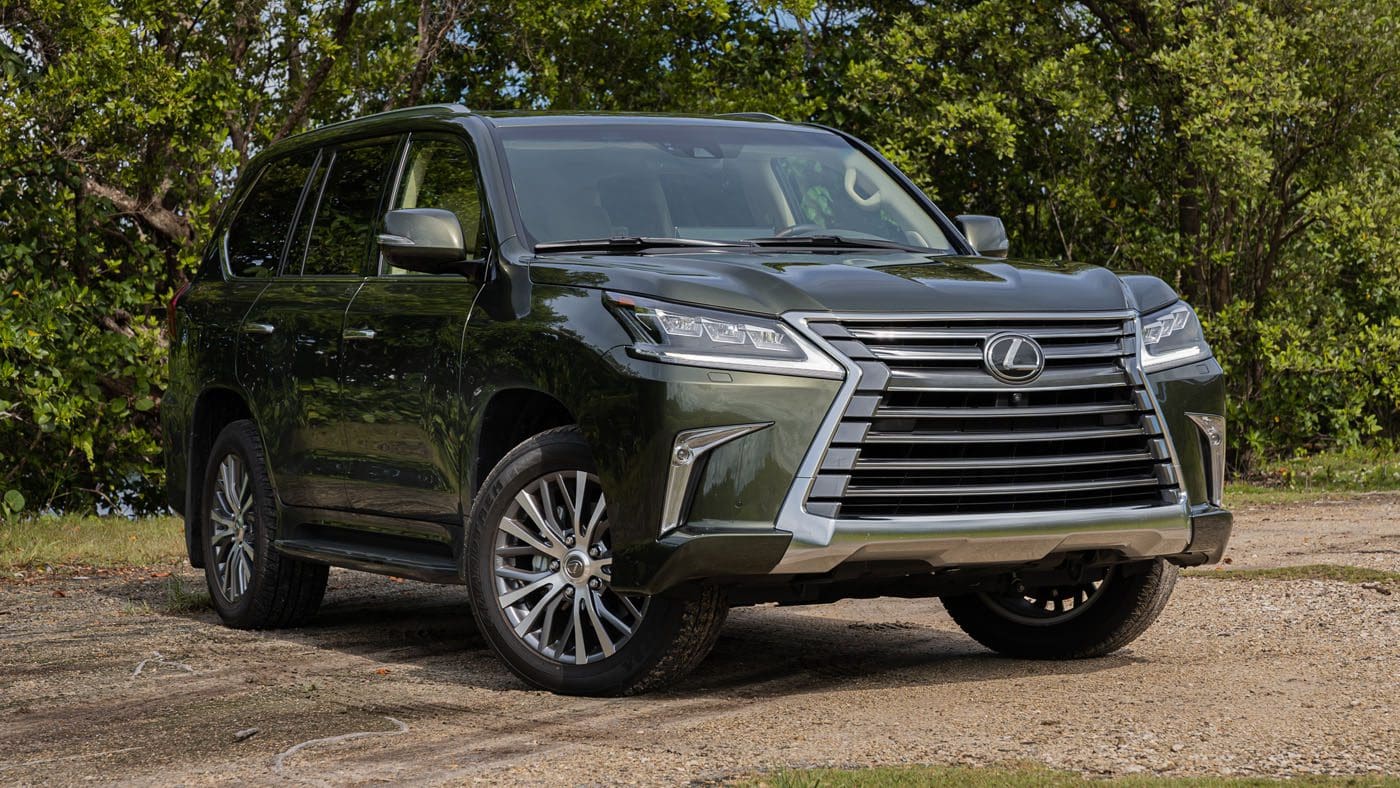
2. Lexus LX 570 (Built to Last)
The Lexus LX 570 is the luxury counterpart of the Toyota Land Cruiser 200 Series—a vehicle with a near-mythical reputation for reliability and global toughness. Built to thrive in the world’s harshest conditions, the LX 570’s platform has proven itself from the dunes of the Middle East to the unpaved roads of rural Africa.
At the heart of this indestructible beast lies a 5.7-liter V8 engine that’s often described by mechanics as “overbuilt.” It’s designed to run under heavy loads, in extreme heat, and with poor-quality fuel if needed. Owners regularly report running their LX 570s past 300,000 miles with little more than routine maintenance—oil, fluids, and filters.
But the LX 570 is more than just a tough shell—it’s also a luxury sanctuary. The interior, though conservative in design, is crafted with high-grade materials that wear slowly over time. Leather seating holds up well, soft-touch materials resist sun damage, and the switchgear feels robust, even after a decade of daily use.
One of the biggest advantages of the LX is how well it ages—inside and out. The paint is deeply applied, the panel fitment remains tight, and even the electronics prove surprisingly robust. Unlike some competitors whose infotainment systems feel ancient after a few years, Lexus designs their tech to remain usable and relevant for longer.
Ownership satisfaction for the LX 570 is exceptionally high, particularly among those who appreciate long-term value. Fuel economy is admittedly one of its weak spots, but for many owners, this is a small trade-off for an SUV that simply doesn’t break.
The air suspension system, though complex, is far more reliable than European counterparts, and many owners have driven 10+ years without any air-related failures. Its towing capacity, off-road capability, and sheer mechanical strength make it a go-anywhere luxury machine. If you want an SUV you can trust through a decade of family vacations, commutes, camping trips, and global adventures, the LX 570 is virtually unmatched.
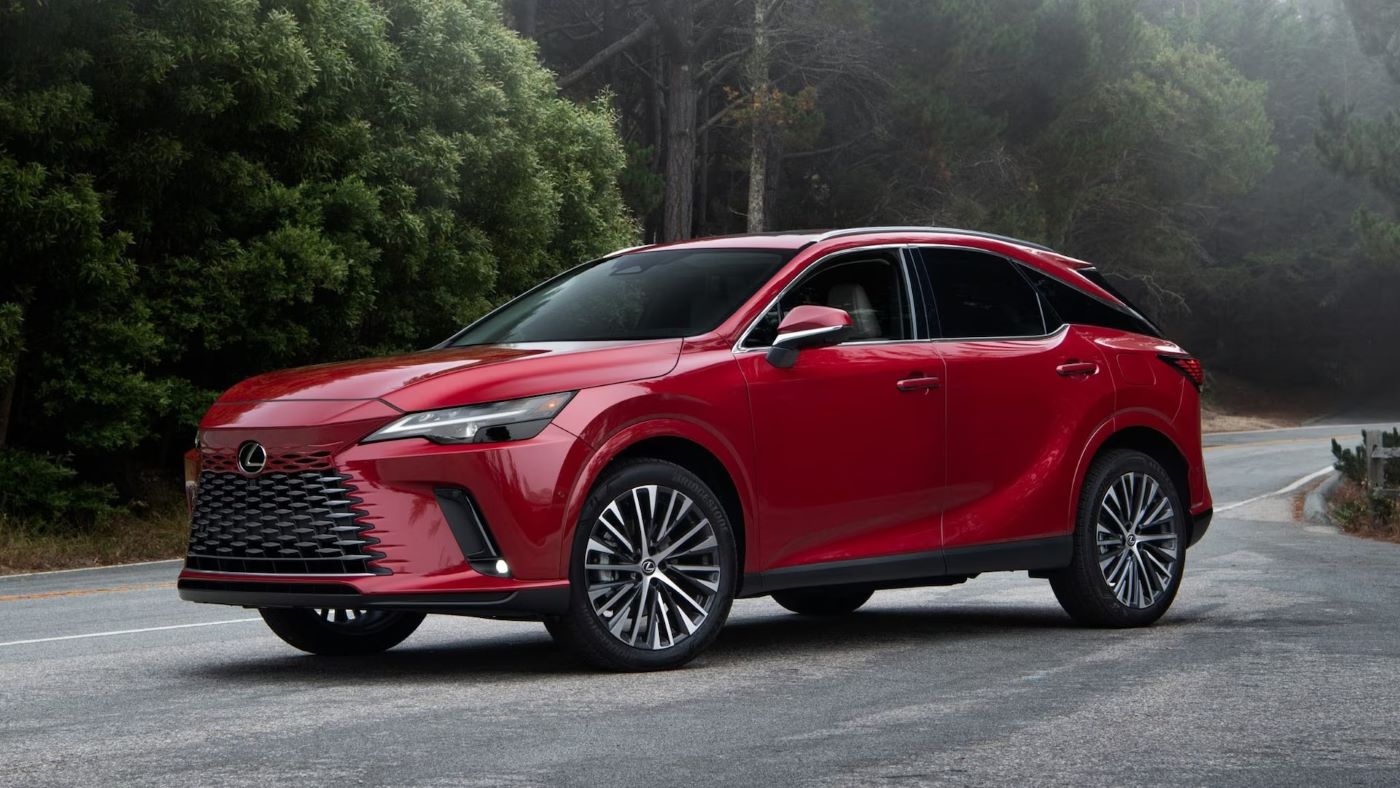
3. Lexus RX 350 (Built to Last)
The Lexus RX 350 has been the best-selling luxury SUV in North America for over a decade—and for good reason. It’s not an off-road tank like the GX or LX, but it excels as a reliable, everyday luxury crossover. The 3.5-liter V6 engine in the RX 350 is a model of refinement and longevity.
Derived from Toyota’s long-standing GR engine family, it has a timing chain instead of a belt (eliminating a major service interval), excellent cooling system durability, and very low oil consumption even with high mileage. Many RX 350s surpass 250,000 miles with no engine-related issues, a claim few midsize crossovers can make.
On the road, the RX 350 provides a quiet, comfortable, and composed driving experience. It’s not a performance SUV, but that’s precisely why it lasts—the components are never pushed to extremes. The transmission shifts smoothly, the suspension prioritizes comfort over sportiness, and the drivetrain as a whole is designed for gentle but dependable operation.
Unlike European rivals, the RX 350 doesn’t rely on air suspension or turbochargers, which often become costly headaches in older vehicles. Lexus deliberately engineered the RX to appeal to buyers who prioritize comfort, efficiency, and minimal fuss—and that’s a big part of its lasting appeal.
Inside, the RX 350 remains impressive over time. The fit and finish is top-tier, even in older models. The seats stay supportive, the dashboard resists cracking and fading, and the interior electronics have proven to be long-lasting and easy to operate.
Lexus’ conservative approach to design and technology works in its favor here—the interior might not blow you away with cutting-edge features, but it doesn’t age badly or break easily either.
For owners looking for a refined, worry-free daily driver that doesn’t age out of usefulness, the RX 350 is one of the best luxury crossovers money can buy.

4. Lexus LX 470 (Built to Last)
The Lexus LX 470 may be an older model, but it’s still hailed by enthusiasts as one of the most dependable full-size SUVs ever built. Based on the Toyota Land Cruiser 100 Series, it shares mechanical DNA with vehicles specifically designed for the most demanding military and humanitarian operations in the world.
Its 4.7-liter V8 engine is renowned for reliability, and it pairs with a durable 5-speed automatic transmission that shifts cleanly and reliably well into the vehicle’s third decade. Many LX 470s are still on the road today with mileage numbers that would scare most owners—300,000 to 400,000 miles is not unheard of with proper care.
What’s unique about the LX 470 is how well it balances rugged mechanical toughness with true comfort. Despite being a body-on-frame SUV, it delivers a surprisingly smooth and quiet ride. The optional Active Height Control (AHC) and Adaptive Variable Suspension (AVS) systems, while complex, hold up better than their German counterparts and are serviceable when needed.
The cabin is laid out with durable materials, spacious seating, and practical storage, offering a luxury experience without the fragility of overly futuristic design. It’s no surprise that used car markets still price well-maintained LX 470s aggressively, especially as newer full-size SUVs become more tech-heavy and less mechanically straightforward.
Part of the LX 470’s cult-like following stems from its proven reliability in extreme conditions. Whether you’re using it as a family hauler, a road-trip machine, or an overland expedition vehicle, it holds up. Aftermarket support is extensive, thanks to the Land Cruiser heritage, and it’s not uncommon to find these vehicles outfitted with roof racks, snorkels, winches, and more.
It’s a vehicle that can evolve with your needs, serving as a comfortable daily driver one year and an off-road legend the next. In terms of longevity and flexibility, the LX 470 remains one of Lexus’ greatest achievements.
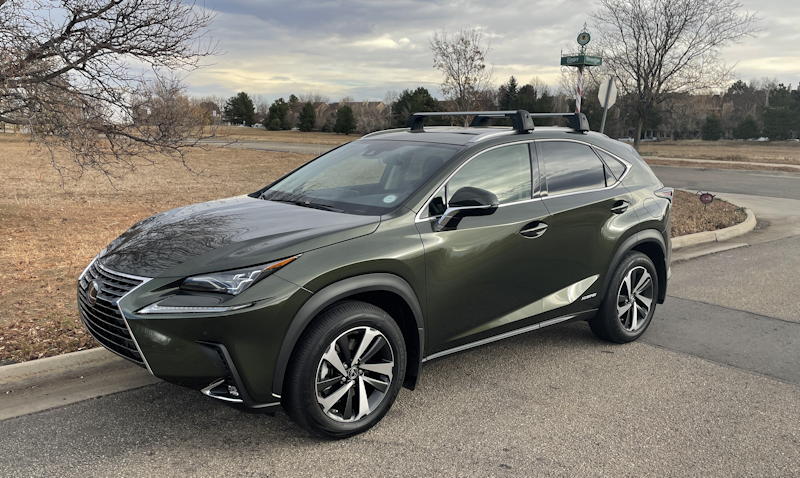
5. Lexus NX 300h (Built to Last)
The NX 300h is proof that a luxury hybrid doesn’t have to be high-maintenance or short-lived. Unlike plug-in hybrids or turbocharged crossovers, the NX 300h uses Toyota’s proven hybrid synergy drive technology that has been refined over millions of vehicles and billions of miles.
The 2.5-liter four-cylinder Atkinson-cycle engine pairs with an electric motor and a continuously variable transmission (CVT) to deliver a smooth and exceptionally reliable powertrain. There are no turbos to fail, no clutches to wear out, and the battery system is designed to last over 200,000 miles in most cases. For a luxury compact SUV, that kind of dependability is a standout feature.
The real advantage of the NX 300h is its simplicity. It’s not overloaded with gimmicky features or bleeding-edge tech that ages poorly. Instead, it offers a comfortable, refined ride with Lexus-quality materials and a reputation for mechanical and electronic stability.
Drivers enjoy excellent fuel economy (often in the mid-30 mpg range), minimal maintenance costs, and a driving experience that feels premium without being fragile. Many hybrid components are shared with Toyota’s best-selling models, which means parts are affordable and easy to source, and many mechanics are familiar with servicing them.
Another aspect that contributes to the NX 300h’s longevity is its well-engineered chassis and build quality. Despite its smaller size compared to other Lexus SUVs, the NX 300h boasts a rigid frame and suspension setup that provides a comfortable yet composed ride.
Lexus engineers focused on balancing fuel efficiency with driving dynamics, and the results are evident in the vehicle’s responsive handling and steady road manners. This focus on engineering integrity means fewer suspension or chassis issues over time compared to rivals that prioritize sportier tuning at the expense of durability.
Moreover, the interior materials and build quality in the NX 300h help it maintain a “new car” feel well into high mileage territory. Soft-touch plastics, durable leatherette upholstery (or genuine leather in higher trims), and well-sealed door panels keep noise and wear to a minimum.
Unlike some competitors whose interiors degrade quickly with heavy use, the NX 300h holds up remarkably well, preserving resale value and owner satisfaction. Many owners report that their vehicles remain as comfortable and refined after 150,000 miles as they were when new, underscoring Lexus’ commitment to long-lasting luxury.
In summary, the Lexus NX 300h strikes a unique balance: it’s an environmentally friendly luxury SUV that also prioritizes longevity and low-cost ownership. Its hybrid system’s proven reliability, combined with solid mechanical underpinnings and quality craftsmanship, make it an excellent choice for buyers who want a vehicle built to last.
For urban commuters, small families, and environmentally conscious drivers, the NX 300h delivers on Lexus’ promise of quality without compromise, making it one of the brand’s most dependable SUVs for the long haul.
5 Lexus SUVs with Hidden Flaws
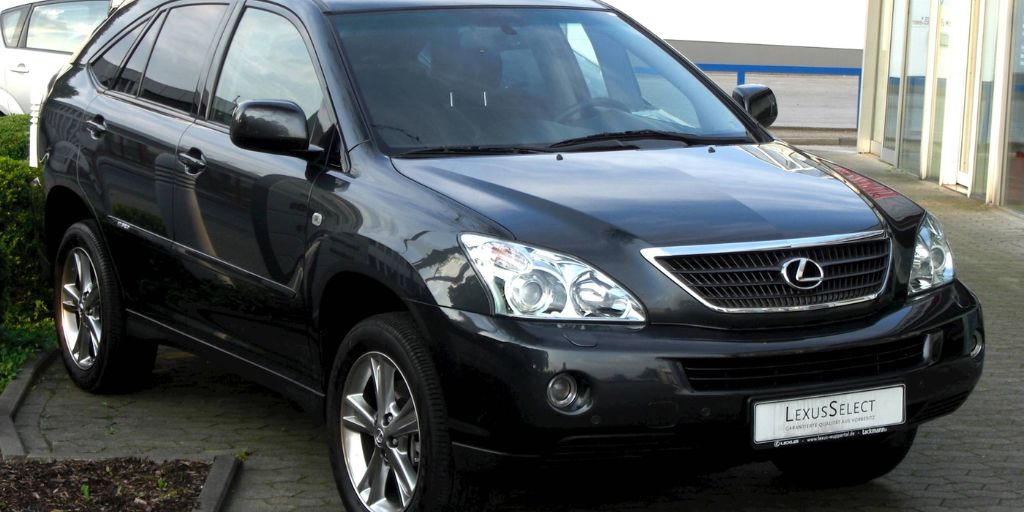
1. Lexus RX 400h (Hidden Flaws)
The Lexus RX 400h was groundbreaking when it launched as the first luxury hybrid SUV, combining the refined comfort of the RX lineup with Toyota’s pioneering hybrid technology.
However, pioneering often comes with teething problems, and the RX 400h is no exception. While the hybrid drivetrain offered impressive fuel economy for its class, the complexity of its components introduced several long-term reliability concerns that buyers didn’t anticipate.
The most notorious problem is the hybrid battery pack. Though Lexus initially designed the battery to last around 150,000 miles, real-world experience has shown that many packs start losing efficiency much earlier. Replacing the battery is prohibitively expensive, often costing several thousand dollars, making high-mileage RX 400hs costly to maintain.
In addition to battery longevity, the RX 400h’s inverter and electrical components have a reputation for failure. The inverter is a crucial component that manages the electric motors and power flow, and its malfunction can cripple the entire hybrid system.
Repairs for inverter failures are expensive and can cause the vehicle to lose its hybrid functionality entirely, leading to higher fuel consumption and reduced performance.
Compounding this is the fact that early hybrid diagnostic tools were not widely available, meaning some owners were left frustrated trying to get their vehicles properly serviced. These electrical woes have led to many RX 400h owners feeling apprehensive about purchasing these SUVs used, especially without a thorough inspection of the hybrid system.
Another hidden flaw of the RX 400h lies in its regenerative braking system. Though regenerative braking helps recharge the hybrid battery and improve fuel efficiency, some drivers have reported inconsistent braking feel due to the transition between regenerative and mechanical brakes.
This can cause a lurching sensation or delayed brake response in certain situations, which is not only uncomfortable but can pose a safety concern if left unaddressed.
While Lexus issued some software updates and extended warranties on hybrid components, these issues have affected the RX 400h’s reputation and resale value. For those considering an early hybrid SUV, the RX 400h serves as a reminder that early adoption sometimes means accepting unexpected maintenance challenges.
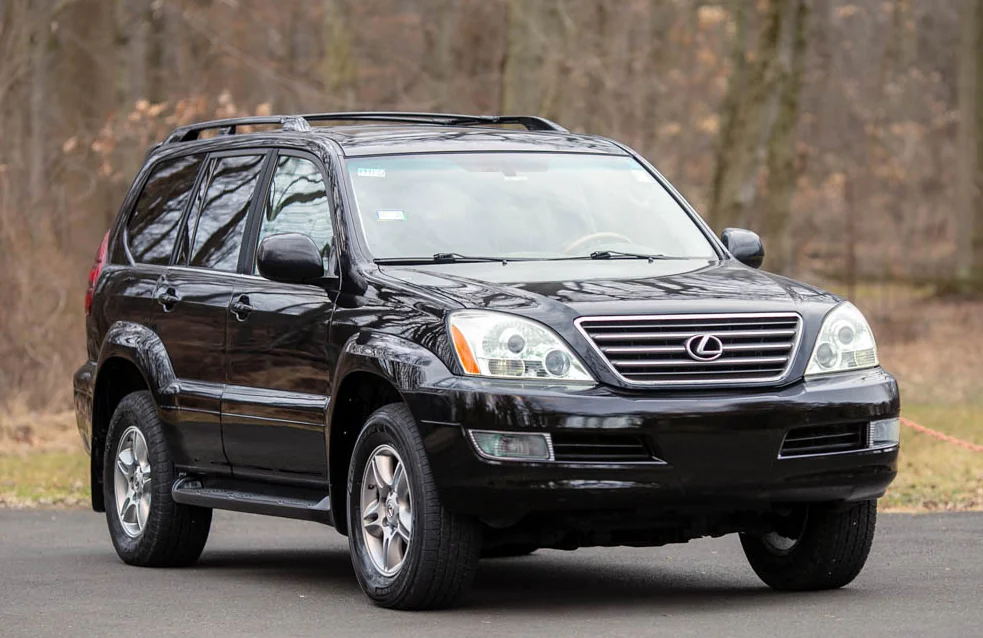
2. Lexus GX 470 (Hidden Flaws)
The Lexus GX 470 is widely praised for its ruggedness and off-road capabilities, but beneath its tough exterior lie some significant design and maintenance challenges that have become more apparent with age.
One of the most prominent issues is the Kinetic Dynamic Suspension System (KDSS), an advanced feature designed to improve handling and off-road articulation by automatically adjusting the sway bars.
While innovative, KDSS has proven to be a costly and troublesome system to maintain. Hydraulic components and electronic sensors can fail, and repairs or replacements often cost thousands of dollars, a surprise for owners expecting Lexus-level reliability. In some cases, suspension failure causes a harsh ride or compromised handling, detracting from the vehicle’s driving experience.
Another persistent problem with the GX 470 involves frame rust, particularly in regions that experience harsh winters and use road salt. Early models did not have adequate corrosion protection, leading to severe rust issues on the frame rails. This rust compromises structural integrity and can lead to cracked or weakened frames—an alarming and costly repair.
Some owners have reported that even minor off-roading or rough roads exacerbate these frame problems. While Lexus later improved corrosion resistance in subsequent models, the early GX 470s remain vulnerable, making rust inspection a critical step for used buyers in northern climates.
The interior, often considered a strong point for Lexus, has also shown signs of premature wear in the GX 470. Although leather seats and trim look luxurious at first, many owners find that the leather cracks and fades relatively quickly compared to other Lexus SUVs.
The infotainment system and electronics, while feature-rich, are now dated and sometimes glitchy in older vehicles. Combined with limited cargo space and a somewhat cramped third row, the GX 470’s practical utility can be compromised as it ages.
These issues don’t diminish the SUV’s off-road prowess but highlight the importance of careful maintenance and thorough inspections to avoid unexpected repair bills.
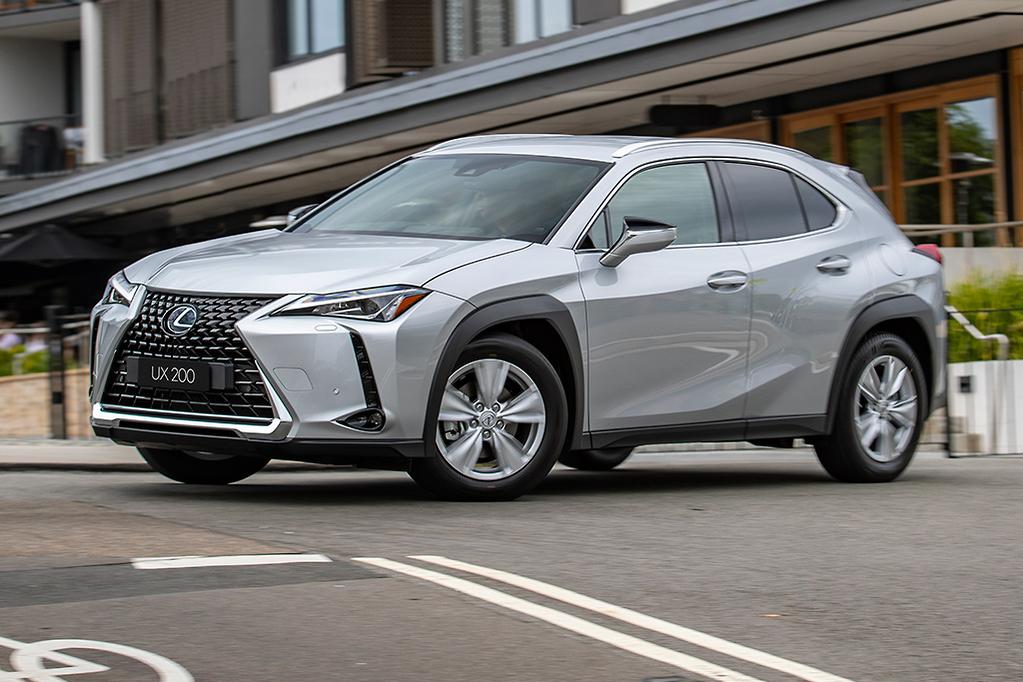
3. Lexus UX 200 (Hidden Flaws)
The Lexus UX 200 represents Lexus’ push into the compact luxury crossover segment, targeting younger, urban buyers looking for style and efficiency. While the UX 200 scores well on design and fuel economy, it is hampered by several inherent flaws that impact long-term ownership satisfaction.
At the heart of the UX 200 is a 2.0-liter naturally aspirated four-cylinder engine, which, while reliable in theory, is underpowered for the vehicle’s weight and intended uses.
On highways or during city driving with passengers and cargo, the engine often feels strained. This underperformance leads to high engine revs, which can accelerate wear on engine components and reduce fuel economy over time, contradicting the car’s eco-friendly image.
Another major criticism of the UX 200 concerns cabin noise and insulation. For a luxury vehicle, the level of wind and road noise inside the cabin at highway speeds is surprisingly intrusive. The UX’s sound-deadening materials and window seals seem insufficient compared to competitors, making long drives less comfortable.
This lack of refinement detracts from the premium experience that Lexus buyers expect and raises questions about build quality and attention to detail. Over time, this noise intrusion can also contribute to driver fatigue, reducing the vehicle’s appeal as a daily commuter.
Space constraints further mar the UX 200’s appeal. As a subcompact crossover, it sacrifices rear-seat legroom and cargo volume for its compact footprint. While it works well for single drivers or couples, it struggles to meet the needs of growing families or those who regularly carry gear.
The rear seats are cramped, and cargo space is limited compared to similarly priced rivals. This lack of versatility leads many owners to trade up sooner than they expected, contributing to lower resale values. The UX 200 is stylish and efficient, but falls short in delivering the well-rounded practicality and refinement that are hallmarks of Lexus vehicles.

4. Lexus RX 350 (2010–2012) (Hidden Flaws)
The Lexus RX 350 generally enjoys a reputation for reliability, but the 2010 to 2012 model years are notorious for a few serious hidden flaws that have tarnished this image. The most significant issue revolves around the rubber oil cooler lines installed in these vehicles.
Unlike metal lines used in later models, the rubber lines were prone to premature deterioration, cracking, and sudden rupture. When these lines fail, oil can leak rapidly, causing catastrophic engine damage if the driver is unaware or slow to respond.
Many owners reported abrupt engine failures, often requiring complete engine rebuilds or replacements—an expensive and frustrating ordeal. Lexus responded to these problems by issuing a Technical Service Bulletin (TSB) recommending the replacement of the rubber lines with more durable metal ones.
However, many vehicles were never retrofitted, especially those sold used or outside official Lexus service centers. This oversight means that the problem still lurks in the used car market, making it critical for buyers to verify the maintenance history before purchase.
Beyond the oil line issue, some RX 350s from this era experienced premature wear of front suspension components, including strut mounts and control arms, leading to noise and degraded handling. These suspension issues, while less severe than engine failure, still result in costly repairs that can surprise unsuspecting owners.
Additionally, the interior electronics and infotainment system from these years have aged poorly. Touchscreen responsiveness diminishes, Bluetooth connections become unreliable, and navigation units lag behind current technology.
While not mechanical, these flaws affect the ownership experience, especially as drivers expect modern conveniences in luxury SUVs. The 2010-2012 RX 350 models show that even a solid nameplate can stumble during transitional periods, highlighting the need for due diligence when shopping for used vehicles from these years.
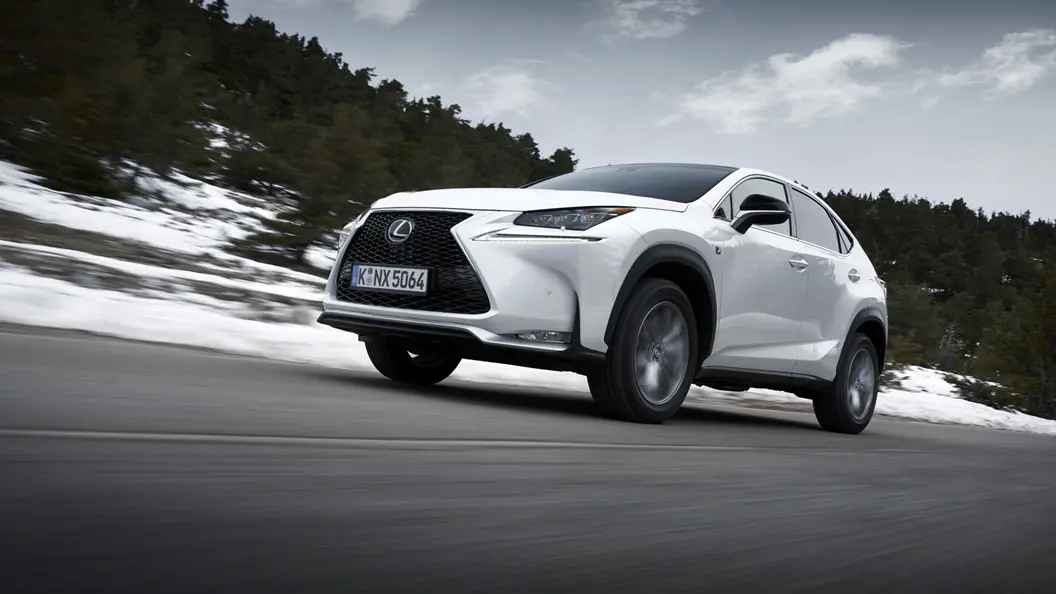
5. Lexus NX 200t (Hidden Flaws)
The Lexus NX 200t was a bold step for the brand, introducing turbocharged performance to a compact luxury SUV segment dominated by naturally aspirated competitors. However, the downsides of forced induction and early tech adoption quickly became apparent with this model.
The 2.0-liter turbocharged engine produces good power on paper but suffers from carbon buildup on intake valves—a common problem for direct-injection turbo engines without gasoline direct injection cleaning protocols.
This buildup restricts airflow, causes rough idling, hesitation, and can eventually lead to costly intake manifold cleaning or repairs. For owners not vigilant with maintenance or who primarily drive short distances, the problem worsens rapidly.
The NX 200t’s transmission has also drawn criticism. Equipped with a 6-speed automatic transmission, many owners report delayed or jerky shifts, especially at low speeds or during stop-and-go traffic. While not a complete failure, this tuning issue detracts from the smooth driving experience Lexus promises and can cause additional wear on the transmission components.
Over time, this can lead to premature transmission issues, increasing maintenance costs and reducing reliability. The problem is exacerbated by the transmission’s tight programming with the turbocharged engine’s power curve, making it less forgiving to aggressive or inconsistent driving.
Finally, while the NX 200t offers a high-tech interior, its infotainment system—including the touchpad controller—has been widely criticized for being unintuitive and frustrating to use. The interface lags, screen responsiveness deteriorates over time, and compatibility with newer smartphones becomes problematic as software updates slow down.
These issues may seem minor, but they affect everyday usability and owner satisfaction. For a vehicle that positions itself as cutting-edge and luxurious, these tech flaws undermine the experience, especially as the NX 200t ages and competing models catch up or surpass it.
Also Read: 5 Cars That Keep Working in Texas Heat and 5 That Overheat Instantly
Lexus SUVs have carved a niche for themselves by blending luxury, comfort, and a reputation for reliability that few premium brands can match. The lineup contains some true champions of longevity, such as the GX 460 and LX 570, which offer rugged underpinnings, simple yet durable powertrains, and interiors that age gracefully.
These models highlight Lexus’ ability to build vehicles that not only deliver a refined driving experience but also withstand the rigors of time and use with minimal fuss. The RX 350 and hybrid NX 300h also prove that even more mainstream or hybrid-focused Lexus SUVs can provide exceptional reliability when engineered with care and a focus on proven technologies.
However, no brand is perfect, and Lexus SUVs are no exception. Some models, like the early hybrid RX 400h or the turbocharged NX 200t, reveal the pitfalls of pushing technological boundaries too far or too fast. Other models suffer from issues such as suspension complexities, frame rust, or problematic electronics that mar the ownership experience.
These hidden flaws, while not universal, serve as important reminders that longevity depends on more than just a brand name. Buyers must remain diligent, research thoroughly, and consider maintenance history and known issues when choosing a used Lexus SUV.
Ultimately, the Lexus SUV lineup offers a diverse range of choices for buyers seeking luxury combined with durability. By knowing which models are proven to stand the test of time and which ones carry risks beneath the surface, owners can maximize the enjoyment and value of their investment.
Whether you’re after a capable off-roader, a comfortable family hauler, or a fuel-efficient hybrid, Lexus has options—but informed decisions always lead to better outcomes.
With the right model and proper care, a Lexus SUV can indeed become a trusted partner for decades, offering peace of mind and the quiet confidence that comes from driving a vehicle built to last forever.
